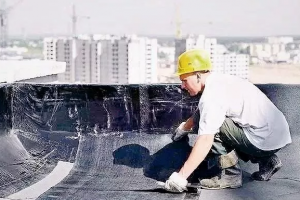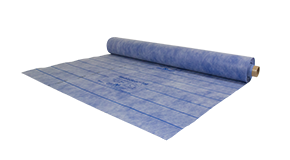Waterproofing membranes are an essential part of construction, protecting the underlying surfaces from water damage. But with so many products on the market, it can be difficult to choose the right one. This guide will provide an overview of waterproofing membranes, and explain why Verseseal waterproofing membrane is the best choice for construction projects.
What Is A Waterproofing Membrane?
A waterproofing membrane is a sheet or layer of material used between two surfaces to protect against water damage. They are usually made from polymeric materials, such as vinyl or modified bitumen, and come in a variety of shapes and sizes to suit different needs. Waterproofing membranes can be applied directly to concrete, masonry, and other construction substrates to provide a barrier that keeps water out.
Advantages Of Using Waterproofing Membranes
The benefits of using waterproofing membranes in construction are numerous. Not only do they protect the underlying surfaces from water damage, but they can also increase the longevity and durability of the structure. In addition, these membranes can seal off joints, cracks, and other weak points in the substrate, helping to reduce the risk of structural failure.
Another advantage of waterproofing membranes is that they can be used to improve energy efficiency. By keeping moisture out, they help keep the interior of the building at a more comfortable temperature, reducing the need for heating and cooling systems.
Types Of Waterproofing Membranes
There are several types of waterproofing membranes available on the market today. These include: thermoplastic membranes, elastomeric membranes, liquid membranes, polyurethane membranes, and modified bitumen membranes. Each type offers its own unique advantages and disadvantages, so it’s important to consider all options carefully before making a decision.
Why Choose Verseseal Waterproofing Membrane?
Verseseal waterproofing membrane may be the best option when it comes to selecting a waterproofing membrane. This product is superior to other polymeric membranes because it offers superior bond strength. The chemical makeup of Verseseal creates a strong bond that won’t break down over time, ensuring the integrity of the waterproof layer for years to come.
In addition, Verseseal is easy to install and repair. It has a low VOC content, meaning it won’t produce any unpleasant odors during or after installation. And its lightweight design makes it easy to transport and handle. All of these features make Verseseal an ideal choice for any waterproofing project.
How To Install Verseseal Waterproofing Membrane
Installing Verseseal waterproofing membrane is easy with the right tools and materials. Before you begin, ensure the substrate is clean and dry. You will then need to mix the adhesive according to instructions, apply it to the substrate, and roll out the Verseseal membrane. Finally, you will need to smooth out any wrinkles and seams before sealing them with a compatible sealant.
Conclusion
Waterproofing membranes are an essential component of any construction project. With the right product, you can protect the underlying surfaces from water damage, extend the life of your structure, and even increase energy efficiency. For the best results, we recommend Verseseal waterproofing membrane, which offers superior bond strength, easy installation and repair, and a low VOC content.

